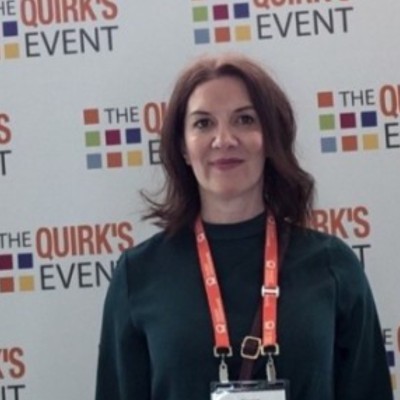Article by ICG member Julie Ellison, Emerald Insights
https://www.linkedin.com/in/julie-ellison-6a270964/

As a researcher with a personal interest in inclusive research, I have seen first-hand the challenges faced by people with disabilities. My sister became physically disabled as young mum of three boys following a brain tumour. I have seen how she has had to overcome many obstacles in her life simply because products and services are not designed with her in mind. For example issues using websites and apps because they aren’t inclusively designed or having to give up on using a product or service because she can’t open, use or navigate it.
I’m passionate about making research more inclusive to reflect the people who actually do, or potentially could, use a specific product or service. Recently I delivered a face-to-face qualitative project focusing on usability and designing for the future. The project involved a series inclusive groups and in-depth interviews (IDIs) with people with a wide variety of different people including those with visual, dexterity, and cognitive challenges. As a moderator, I found these groups to be hugely worthwhile and rewarding. The participants were highly engaged in the research, gave a different perspective offering insights into potential barriers of use (with some really innovative solutions). They even thanked me at the end for having the opportunity to participate in the research!
This experience made me think about the importance of inclusive research design. When we are inclusive of people with disabilities, we get a more representative view of the population as a whole. We also create products and services that are more accessible and usable for everyone.
Inclusive research design is the process of ensuring that all people, regardless of their abilities, have the opportunity to participate. There are a number of practical considerations to take into account when conducting inclusive face-to face Qualitative research. These include:
1.Choosing an accessible location if face to face (or consider whether it can be adapted and delivered online/ mobile)
The location should be accessible to all participants, including those with mobility challenges. This may mean choosing a location with ramps, accessible bathrooms, and wide doorways. It’s thinking through how participants move around the facilities during the research – this has involved me moving and changing furniture in a room to make it more comfortable!
2. Using accessible materials and stimulus
The research materials should be accessible to all participants, including those with visual or hearing impairments. This may mean using large print materials or using a different format for example printed boards or laminated individual stimulus packs. It can also involve providing sign language interpretation, or using audio recordings rather than relying on text. This applies to all documentation used including consent forms – its important participants are fully informed!
3. Providing accommodations as required
Participants may need accommodations, such as extra time, breaks, or assistance with communication. It is important to be flexible and accommodating to the needs of each participant and to understand exactly what these needs are during the recruitment phase. I’d advise allowing time pre-fieldwork to check what the participant would find helpful. This can also allow you to answer any questions or concerns they might have and set expectations for the research.
4. Being respectful to participants needs
Researchers should treat all participants with respect, regardless of their abilities. This means being sensitive to any needs and limitations, and avoiding any language or behaviour that is discriminatory or could offend. I’ve found that often its simply being curious and interested in listening to their story, lived experience & opinions. It’s about being observant and can be as simple as moving around the room more, crouching down beside someone to show stimulus or to check on understanding.
5. Being flexible with your research approach
It’s important to think through the research methodology to make sure it is truly inclusive. I’ve found that it is important to allow more time upfront to allow for any introductions and to listen to and understand the rich context that participants offer. Most tasks can be adapted or changed to suit the audience and meet the objectives & don’t forget to utilise pre-tasks to strip back your discussion guide and give the flexibility of more time. Make sure that you are clear & concise in what you are asking and use everyday language. Be ready to change direction or flow of the discussion if needed. I normally shorten the length of groups (2 hrs is too long!) to 60-90 minutes and reduce groups size or conduct mini groups with 3-4 participants.
Inclusive research is not always easy, but it is essential to ensure that all people have a voice in the research process. By following these practical considerations and working with clients to high-light the benefits to the research outputs and the valuable insights gained, we can help to create a more inclusive environment. Small adjustments can make a big difference. Inclusive research design is not just about doing the right thing. It’s also about making better products and services that are more accessible and usable for everyone.
If you are a researcher, I encourage you to consider conducting inclusive research in your next project. It will make a difference!
